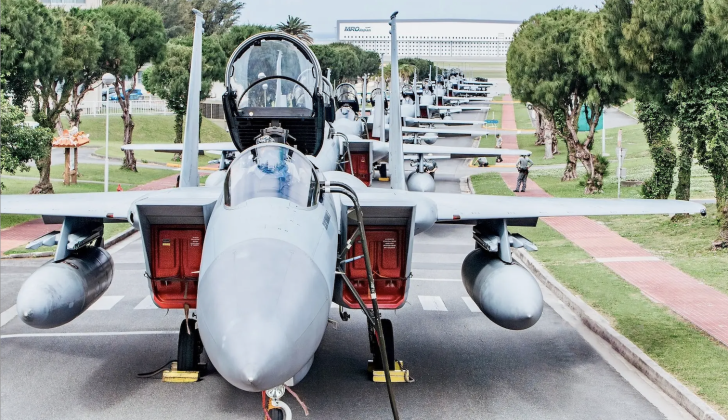News
U.S. Forward Deploys F-22 Stealth Fighters Near Taiwan: Adjacent Japanese F-15 Unit Disabled By Earthquake
The U.S. Air Force has redeployed F-22 Raptor fifth generation air superiority fighters under the 199th and 19th Fighter Squadrons to Kadena Air Base, Okinawa, as part of a broader effort to maintain a continuous fighter presence at the facility. The deployment coincides with earthquake warnings on Okinawa which have disabled Japanese F-15J fighters based it nearby Naha Air Base, forcing the approximately 40 aircraft to be temporarily redeployed to higher ground. The position of facilities on Okinawa are particularly sensitive due to ongoing tensions with neighbouring China in the Taiwan Strait, with the Japanese island providing one of the closest locations for a potential response by Washington and Tokyo to contingencies in the area. The F-22 was for over a decade considered the prime air superiority fighter in the United States and wider Western world, although the age of its avionics and less stealthy airframe materials have led it to be considered increasingly out of date particularly when compared to American F-35 and Chinese J-20 fighters currently in production. Multiple new Chinese J-20 brigades have been deployed near the Taiwan Strait over the past two years.

The deployment of F-22s to Kadena Air Base follows the phased withdrawal of F-15C/D Eagle air superiority fighters, the Raptor’s direct fourth generation predecessor, which were kept on permeant deployment there for over four decades. With the F-15C/D considered almost totally obsolete if confronting cutting edge Chinese ‘4+ generation’ and fifth generation fighter units, the U.S. has struggled to find a replacement for the aircraft suitable for a permanent deployment. Wider ranging issues with the F-22 mean that it has consistently had by far the lowest availability rates in the U.S. Air Force, which is particularly dangerous when forward deployed to such a sensitive location.
Although the F-22 was initially required to have almost double the range of the F-15, its actual range is significantly lower making it by far the shortest ranged heavyweight fighter class operated anywhere in the world. This is a particular hindrance over the vast territories of the Pacific, with rivals such as the Chinese J-20 having over double its range. The F-22 saw orders to terminate production given less than four years after the fighter class began to enter service, with the class seen to have failed to provide a viable successor to the F-15, and the Air Force currently pressing to gain congressional approval to begin retiring the aircraft from service several decades ahead of schedule.












